#poiret design
Explore tagged Tumblr posts
Text
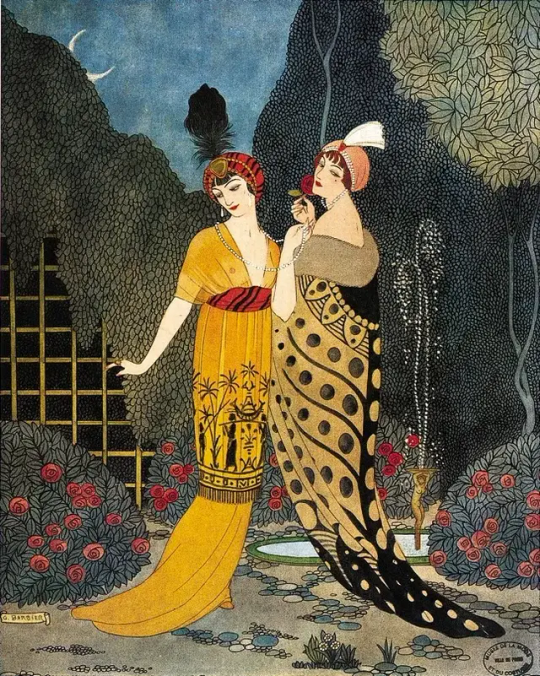
George Barbier, Paul Poiret gowns, Les Modes, 1912.
Colour illustration by George Barbier from Les Modes showing two young women wearing dramatic evening outfits influenced by the current interest in orientalism, one is an empire line gown in gold draped fabric featuring a printed Egyptian scene, the other is a loose fitting wrap style mantle with a black, grey and white geometric design and fur collar, both women wear turban style hats with feathers, Paris, France,1912. (x)
#george barbier#illustration#paul poiret#1912#les modes#les modes paris#orientalism#gowns#edwardian#painting#art#vintage#egyptian#aigrette#poiret#barbier#1910s fashion#chic#parisian chic#poiret design#poiret gowns#paul poiret design#fashion#fashion illustration#1912 illustrations#french art#french fashion#paris#paris fashion
83 notes
·
View notes
Text
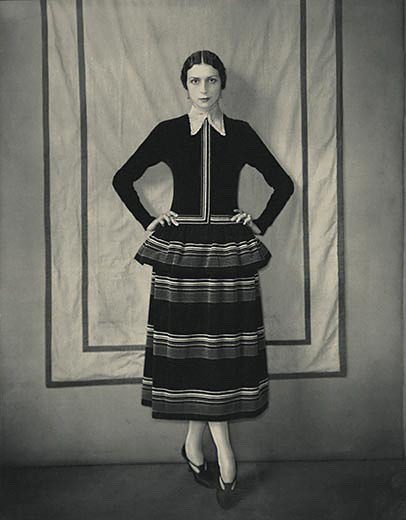
Edward Steichen
Model Dinarzade in a Dress by Poiret
1924
#edward steichen#modern art#steichen#fashion#fashion design#Dinarzade#poiret design#poiret#art decó#fashion model#model
6 notes
·
View notes
Text
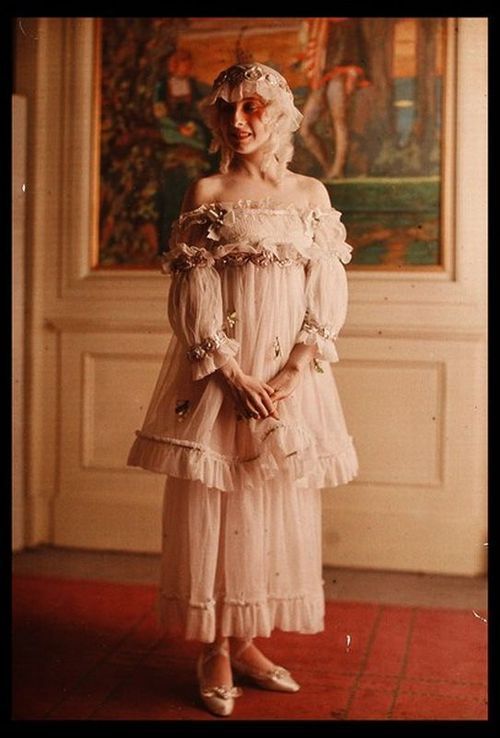


Paul Poiret costumes, photographed by Henri Manuel, circa 1920
#paul poiret#mdpcostume#fashion history#vintage#1920s#photography#20th century#costume#costume design#fashion#vintage fashion#henri manuel#historical costume#fancy dress#dress up#mdpvintage
1K notes
·
View notes
Text
Japanese Insired Coats of the 1910s

Maison Amy Linker • Paris
A coat with a silhouette like an outer robe for kimono was described as a “manteau japonais” by fashion magazines of the time, and the silhouette of this particular coat is reminiscent of the “uchikake” robe worn by kabuki actors or oiran courtesans in ukiyoe prints. The boldly striped collar is probably inspired by the “date-eri” collar style used in kabuki costume. The flower-like motifs executed in embroidered beads look like the traditional “hanakatsumi” motif that became popular in late Edo-period Japan when favored by kabuki actors. In contrast, the motifs on the bordered panel on the back resemble motifs used around the Mediterranean in ancient times, and could reasonably be called palmettes. This coat is an excellent example of oriental-style wear packed with eclectic elements that were fashionable early in the 1910s. Maison Amy Linker opened in Paris in 1900, specializing particularly in coats and suits. Its latest products were frequently seen in French fashion magazines early in the 20th century. The house is perhaps best known for introducing sporty fashions in the 1920s.
Many of the era's most prominent designers created manteau Japonais. Below are a few more examples of Japanese inspired cocoon coats of the era.


Two Paul Poiret Japonaise manteau

Jean-Philippe Worth • c. 1910


Right: Jaques Ducet embellished house coat
Left: Mariano Fortuny kimono coat • 1910s

Evening coat • French • c. 1912
#fashion history#women's fashion history#1910s fashion#edwardian fashion#cocoon coat#vintage designer fashion#jacques ducet#mariano fortuny y madrazo#house of worth#amy linker#paul poiret#paris fashion of 1910s#the resplendent outfit blog#fashion blogs on tumblr
55 notes
·
View notes
Text






























La Vie En Art 👗🎨🎹🎻🎭💃 - Travel through Time & Style at Musée Soieries Brochier (10 novembre)
If you think #Lyon is about everything but the #fashion, be prepared to change your mind after reading this post. For this month’s event, we delved into the fashion #history of Lyon by getting up close and personal with the prestigious #Brochierfamily known for #silk production at The Musée Soieries Brochier. 4 generations, 9 members of this Lyonnais family have supplied their #exquisitely #woven and #printed silk #fabrics to some of the greatest #couturiers/fashion #designers such as #Givenchy, #Valentino, #PaulPoiret, just to name a few over the past 130 years.
The fashion #sketch archives on display with the fabrics selected for each look summarized the key #trends of the #1950s. Flipping through them, I got completely immersed in the #classic #elegance and #retro #glam of the #goodolddays. Even more awe-inspiring were the featured #couture pieces impeccably #crafted from the most #delicate and #intricate fabrics. The #Chanel silk #velvetburnout #dress with #iconic #tweed trimmings was an exceptionally beautiful sight to behold. It took great #artisanship to work with such a #precious and #luxurious fabric. What was equally mesmerizing was the #sophisticated #drapes of the #goldlamé #Dior dress. Soieries Brochier fabrics have played an #inspiring role in the #creation of fashion #masterpieces.
With the #technological #innovations of the 21st century, the Brochier family has experimented with weaving silk threads with #opticalfibres to bring about the #LED #intelligentfabrics. #Art, #tech and #heritage all wrapped up in the #luminous #weddingdress at the end of the tour.
________________________________
Follow La Mode by GV Miao on:
Blog: http://la-mode-by.gvmiao.com/
Tumblr blog: http://lamodebygvmiao.tumblr.com/
La Mode by GV Miao fashion blog fb page: https://www.facebook.com/gvmiaovickivictoirefashionistaz
La Mode by GV Miao's Fashion Project of the Year: https://www.facebook.com/lamodebygvmiaofashionprojectoftheyear
YouTube: http://www.youtube.com/user/Vickigoders
Twitter: http://twitter.com/GV_Miao
Instagram: http://instagram.com/la_mode_by_gv_miao
#fashion#musée soieries brochier#lyon#museum#haute couture#art#style#history#brochier family#silk#fabrics#woven#printed#couturiers#fashion designers#givenchy#chanel#diorama#valentino#yves saint laurent#christian lacroix#paul poiret#1950s#sketches#archives#trends#classic#elegance#glam#retro
1 note
·
View note
Text
youtube
Okay, I do agree with the idea that women dressmakers of history have largely been ignored, and fashion history needs to do better and recognizing them.
BUUUUUT
I also think it's really reductive to credit Worth's success purely on the glass elevator.
As talented a designer as he was, Worth's real genius was in marketing and branding. He was the first designer to have a clear and defined *aesthetic.*
The fact that you had to go to his couture house rather than him coming to the client created *mystique,* and it made buying dresses into a social event. Suddenly, it was something you could boost your reputation with by doing. He also had the brilliant idea of making less-expensive pieces that less wealthy women could afford, which played a huge role in why House of Worth was fucking EVERYWHERE.
The big thing that I really disagree with was the idea that customers buying Worth's designs rather than Worth designing for the client was purely an act of sexism. Worth selling dresses purely on his own design meant that he could go bigger and bolder, and much more innovative than your average society lady could think of.
It meant that he could bring *art* into fashion, and you can draw a direct line from Charles Fredrick Worth to Paul Poiret to Elsa Schiaparelli to Alexander McQueen. No acting-on-client's-orders dressmaker had ever done anything that bold before.


So, yes, while Worth's immense success is due in part to the glass elevator, he did bring actual revolutionary innovation to fashion. His place in fashion history is well-deserved.
206 notes
·
View notes
Text

Paul Poiret is usually associated with designs in the early years of the c20th but here is one of his later works, a c1929 evening dress of purple sequinned chiffon. It is an altogether luscious interpretation of the period with a nod to his love of embellishment. Via FIDM Museum.
169 notes
·
View notes
Text

1928 Poiret designed curved, aqua lacquered wood vanity. From Art Deco, Art Nouveau & 20th Century Decoratif Arts Group, FB.
510 notes
·
View notes
Text


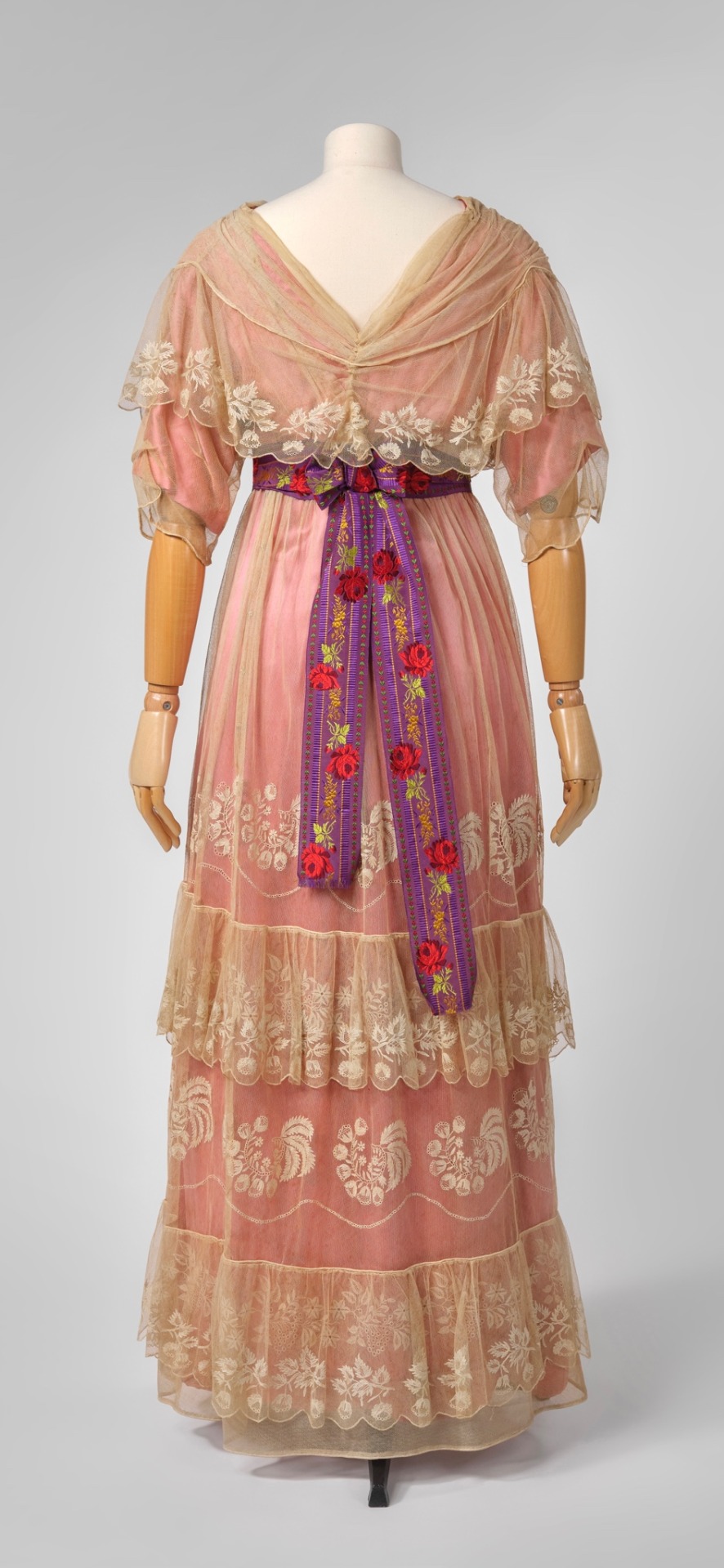
Peach pink silk dress, 1910-1912, French.
Designed by Paul Poiret.
Palais Galliera.
#paul poiret#poiret#womenswear#extant garments#dress#silk#19th century#palais galliera#france#1910#1910s#1910s dress#1910s France#1910s extant garment
443 notes
·
View notes
Text

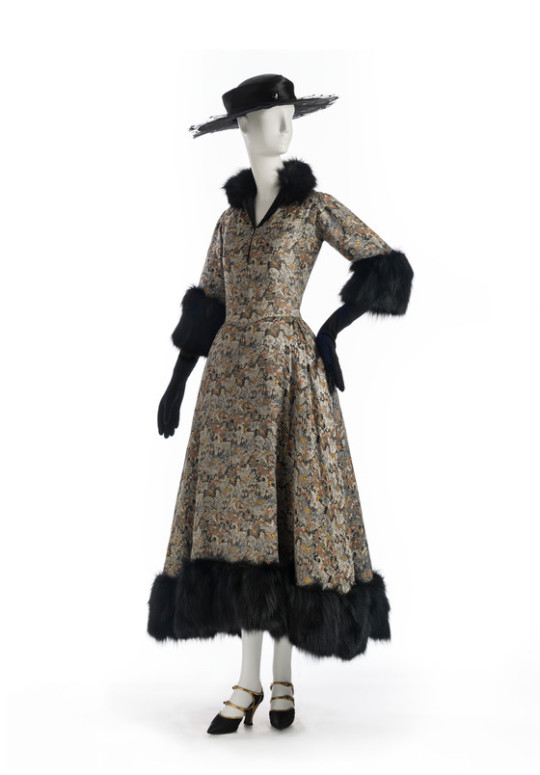
• Woman's Dress "Patineur".
Designer/Maker: Paul Poiret (France, 1879-1944)
Place of origin: France
Date: ca. 1921
Medium: Silk satin with silk and metallic-thread supplementary-weft patterning, with fox fur and silk velvet trim.
#fashion history#history of fashion#dress#fashion#vintage clothing#vintage fashion#vintage#antique#antique dress#1920's#1920's fashion#1920's dress#woman's fashion#woman's dress#patineur#paul poiret#ca. 1921
1K notes
·
View notes
Text
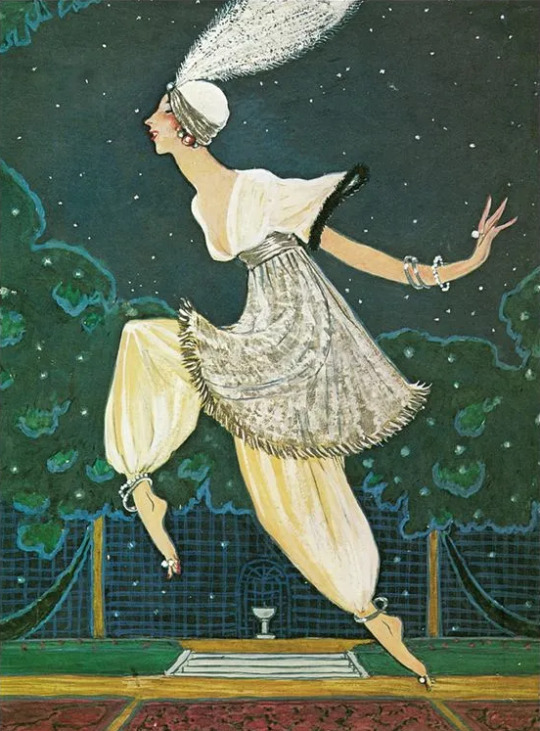
Georges Lepape, Denise Poiret, wife of the French fashion designer Paul Poiret, at The Thousand and Second Night Party, detail, 1911.
Paul Poiret styled his own persona after that of a sultan from “The Thousand and One Nights,” the theme of a bacchanal (“The Thousand and Second Night”) that, in 1911, the Poirets threw in the garden of their eighteenth-century mansion, on the Right Bank. Three hundred guests consumed nine hundred litres of champagne, while parrots and monkeys screeched in the shrubbery, and semi-nude black houris and jinns circulated with platters of exotic delicacies. Scheherazade’s tales had recently been translated into French by the Arabist Joseph-Charles Mardrus (whose bride, the bohemian writer Lucie Delarue, wore a cycling outfit to their wedding that may have inspired Poiret’s harem pants), and she was, in many respects, his paradoxical ideal woman: the slave girl as free spirit. (x)
#georges lepape#painting#art#1911#denise poiret#paul poiret#fashion designer#paris#aigrette#lepape#illustration#night party#party#1910s party#paris party#poiret#party outfit#oriental outfit#oriental#oriental costume#costume#1910s costumes#party costume#art nouveau#1911 illustrations#parisian costume#french costume#la belle epoque#belle epoque#turban
39 notes
·
View notes
Text






CHARLES COURTNEY CURRANON - ON THE HEIGHTS, 1909
Three young women are portrayed sitting on a boulder, silhouetted against a vibrant summer sky. This artwork depicts a serene moment of relaxation and reflection, featuring women in elegant, white dresses. The scene is set in the charming landscape of the Cragsmoor art community close to Ellenville, New York. The wide, vivid sky stands out prominently, showcasing Curran's skill for portraying light and atmosphere.
The women depicted in the artwork are dressed in white, a color that was quite fashionable at that time. White was preferred for its connection to purity, simplicity, and the summer season. The use of lightweight fabrics like cotton or linen was common, evident in the flowing nature of the dresses, which corresponds to the shift towards more breathable materials for outdoor and casual clothing.
The dresses in the artwork seem to be loose-fitting, featuring a high waistline that was starting to transition from the S-curve shape of the early 1900s to a straighter, column-like style by the end of the decade. This reflects the impact of designers such as Paul Poiret, who was known for his more relaxed and less constricting designs.
The late 1800s and early 1900s experienced a cultural shift as art progressively moved outdoors, partly due to the accessibility of portable painting tools. This era embraced plein air painting, in which artists painted straight from nature. Curran adopted this approach, enabling him to seize the immediacy of the moment, as illustrated here. Additionally, Curran's personal life, including his marriage to Grace Wickham Curran, who was also an artist, and his time spent in artist communities, influenced his work.
54 notes
·
View notes
Text
an idea for a wrap coat

(inspired by paul poiret's evening wraps, other 1920s coats, and russian constructivist patterns and designs from around the same time)
33 notes
·
View notes
Text

Paul Poiret (French, ) was one of the most influential fashion designers of the first half of the 20th century. He is credited with freeing women from the corset with his draped, unstructed styles that revolutionized the fashion world. Instead of tailoring, Poiret designed his fashions by draping and folding, creating unique pieces that echoed the traditional styles of the East. Art Deco fashion also became synonymous with Paul Poiret.
“Whenever I sign a garment with my name, I consider myself the creator of the masterpiece.” – Paul Poiret

Sorbet, created in 1912, is one of Poiret's signature designs. It was referred to as the "lampshade dress".



Poiret's first successful design was a kimono coat which he created while working for the design house of Jacques Doucet.


Left: Madame Poiret, Paul's wife, in 1912, wearing one his more bohemian creations
Right: Model wearing a Paul Poiret dress, 1914
Poiret's original designs and his ability to market his styles in new ways changed the fashion landscape forever. He designed outfits for film actresses, creating opportunities for his styles to be seen and credited beyond the runway. He was quite the bon vivant – a masterful host of events and parties that showcased his latest styles.

Fancy dress costume • 1911 • Metropolitan Museum of Art
The costume pictured above was influenced by the Russian dance company, Ballets Russes, when it performed in Paris. Poiret designed the costume for his 1002nd Night party in 1911, where it created tremendous publicity for his fashion house.
#fashion history#paul poiret#french fashion design#belle époque fashion#art deco fashion#lampshade dress#the resplendent outfit blog#women's fashion history#early 1900s fashion#designer fashion#vintage designer fashion#kimono fashion#historic clothing#old fashion photos
38 notes
·
View notes
Text

Lonelyboy's @happylifesims 1920s Day Dress 01 and 02, converted from TS4 for TF-EF! 10 original colors apiece, textures in the AF files only with other ages slaved. Both are categorized for Everyday + YAF Maternity, and Dress 01 (on the right in the picture) is also Outerwear.
DOWNLOAD Dress 01 (the jacket)
DOWNLOAD Dress 02 (with the striped trim)
Swatches, etc. under the cut.
Dress 01 is paired with semi-opaque hose and oxford pumps. (The reference here is a very funky 1928 Liberty of London print set, but you really can't see much of it.) Just under 5k polys. Ten colors:

Dress 02 is Everyday only. Also around 5k polys. All colors get black t-strap heels with opaque black wool stockings, and this shared texture is in the AF mesh package. (This dress was designed in 1924 by Paul Poiret and is also in the V&A collection.)

I have most of Lonelyboy's 1920s day dresses in some state of completion and I'm hoping to release at least a few this week while I'm on break.
Credits: First and foremost, Lonelyboy for the original TS4 dresses! I can't thank him enough for making beautiful meshes that are also constructed so smartly. Lifa @withlovefromsimtown for the WSOs for the morphs for all ages and the elder conversion of Dress 02. @witheredlilies for Dress 01 shoes for TF/AF, and @picknmixsims for streamlining my whole age conversion process with the Repository Wizard.
Known issues: the drapey bow/scarf bits don't always hang perfectly. (Fat morph of 02 is pictured above; you can see how it clings to the bust.) Clipping on the skirt is comparable to similar EAxis meshes.
#the sims 2#sims 2#sims2cc#sims 2 cc#sims 2 download#ts2 clothes#ts2 historical#sims 2 custom content
53 notes
·
View notes
Note
Sorry if it's a stupid question, but I thought you'd be best to answer it. Why was Coco Chanel's "Little Black Dress" so special? I've been going though your early 1900s tags and knee-length dresses existed way before Coco. Black dresses too. Knee-length black dresses too. What was so special about Chanel? I'd argue that Paul Poiret had a much bigger influence on fashion, with some of his looks being 1920s back in 1910s. So why Chanel became so big? Is it all down to business?
It's historical context. One of the biggest things about appreciating fashion history is being able to put it all in context.
Although black dresses were popular evening wear throughout the Victorian and Edwardian era, the dresses of that era were still over-the-top and extremely fancy. The dress was designed by a couturier, House of Worth being the most influential and popular, silk had to be imported and woven, the beading and embroidery and other details hand-crafted by métiers, and then all assembled by seamstresses in the atelier.
Poiret started out with this notion of radically simplifying fashion. His robe de minute was a sort of proto-flapper dress, and it got its name because it only had two seams and could be sewn up in a minute. In spite of this, Poiret couldn't fully escape Edwardian ostentatiousness, and frequently used exotic silks and fancy detailing, still seeing his designs as works of art. His primary supporters were still the titled nobility of old Europe
World War 1 had everything to do with simplifying fashion. Well, that and the Russian Revolution the collapse of the Hohenzollerns and Austrian Habsburgs and the general collapse of the old aristocracy. Couture houses were forced to close, and Poiret was made to serve as a tailor for the French army. When he re-opened his house, he re-opened to a new world.
Chanel viewed clothes through a much more practical lens, rather than as works of art. She made menswear-inspired clothing with clean lines and few accessories, which was much more in line with the new, liberated woman of the 1920s. The little black dress caught on because it was something every woman could wear and every woman could look good in. It was dependable and practical, thus, "the Ford of fashion." Rather than relying on the old, decaying nobles whose money was running out, Chanel's clientele came from the industrial business class that had an endless supply of new money.
Of course, the world would change again after World War II, and Chanel would be usurped by Christian Dior as the new arbiter of elegance and modernity. Dior brought extravagance and opulence back to French couture, and his nipped-waist designs hearkened back to the nostalgia for pre-war times. Chanel was dealing with the fallout of an affair with a German intelligence officer and had to self-exile from France for several years.
Eventually, she returned, but the brand was out-of-date and diminished. Rather than cutting-edge elegant ballgowns like she had made before, the Chanel brand was pretty much just limited to its iconic suits, and as time wore on, it was considered to be something of a stuffy old lady brand until Karl Lagerfeld revived it in the 80s.
172 notes
·
View notes